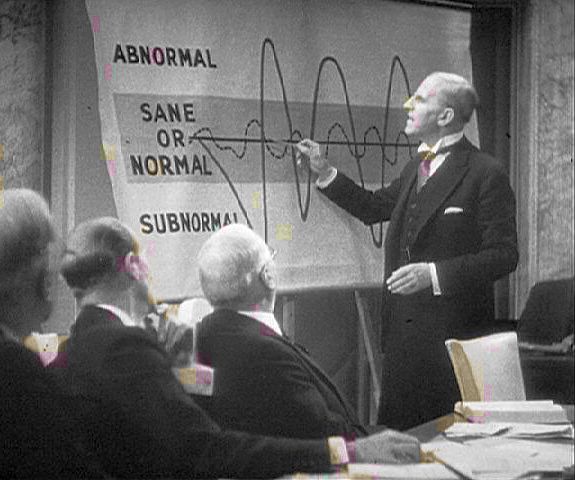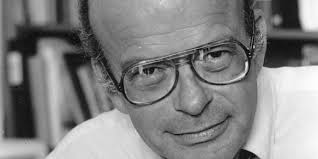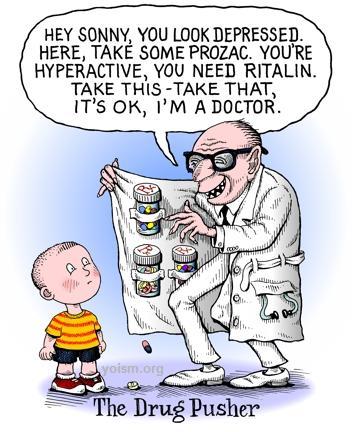Rosenhan Experiment Exposed Psychiatric Fraud
August 27, 2015

A 1972 field experiment tested the
validity of psychiatric diagnoses
and found they are totally bogus.
The study concluded that psychiatric hospitals "can't distinguish the sane
from the insane." Essentially, like the
military industrial complex and war, the mental health establishment has a vested interest in making us all insane.
Related: Katherine Jaconello- My Crusade Against Psychiatry
The Rosenhan experiment was a famous experiment conducted in 1972 to determine the validity of psychiatric diagnosis, by psychologist David Rosenhan (1929-2012), a Stanford University professor, and published by the journal Science in 1973 under the title "On being sane in insane places".
The study is considered an important and influential criticism of psychiatric diagnosis. It was while listening to one of R. D. Laing's lectures that Rosenhan wondered if there was a way in which the reliability of psychiatric diagnoses could be tested experimentally.

(left. David Rosenhan)
Rosenhan's study was done in two parts. The first part involved the use of healthy associates or "pseudopatients" (three women and five men, including Rosenhan himself) who briefly feigned auditory hallucinations in an attempt to gain admission to 12 different psychiatric hospitals in five different States in various locations in the United States.
All were admitted and diagnosed with psychiatric disorders. After admission, the pseudo-patients acted normally and told staff that they felt fine and had no longer experienced any additional hallucinations.
 All were forced to admit to having a mental illness and agree to take antipsychotic drugs as a condition of their release. The average time that the patients spent in the hospital was 19 days. All but one were diagnosed with schizophrenia "in remission" before their release.
All were forced to admit to having a mental illness and agree to take antipsychotic drugs as a condition of their release. The average time that the patients spent in the hospital was 19 days. All but one were diagnosed with schizophrenia "in remission" before their release. The second part of his study involved an offended hospital administration challenging Rosenhan to send pseudo patients to its facility, whom its staff would then detect. Rosenhan agreed and in the following weeks out of 193 new patients, the staff identified 41 as potential pseudo-patients, with 19 of these receiving suspicion from at least 1 psychiatrist and 1 other staff member. In fact, Rosenhan had sent no one to the hospital.
The study concluded "it is clear that we cannot distinguish the sane from the insane in psychiatric hospitals" and also illustrated the dangers of dehumanization and labeling in psychiatric institutions.
It suggested that the use of community mental health facilities which concentrated on specific problems and behaviors rather than psychiatric labels might be a solution and recommended education to make psychiatric workers more aware of the social psychology of their facilities.
Thanks to Dan Abshear for the tip!
Related: Katherine Jaconello- My Crusade Against Psychiatry
--------







Peter G said (September 2, 2015):
Last week you covered "The Rosenhan experiment" which proved the complete falsehood of psychiatry. So i decided to ask my Daughter who spent three years studying psychology at Portsmouth University if she
had heard of it?
The silence was deafening.
Says it all really and dovetails fully with this article also.